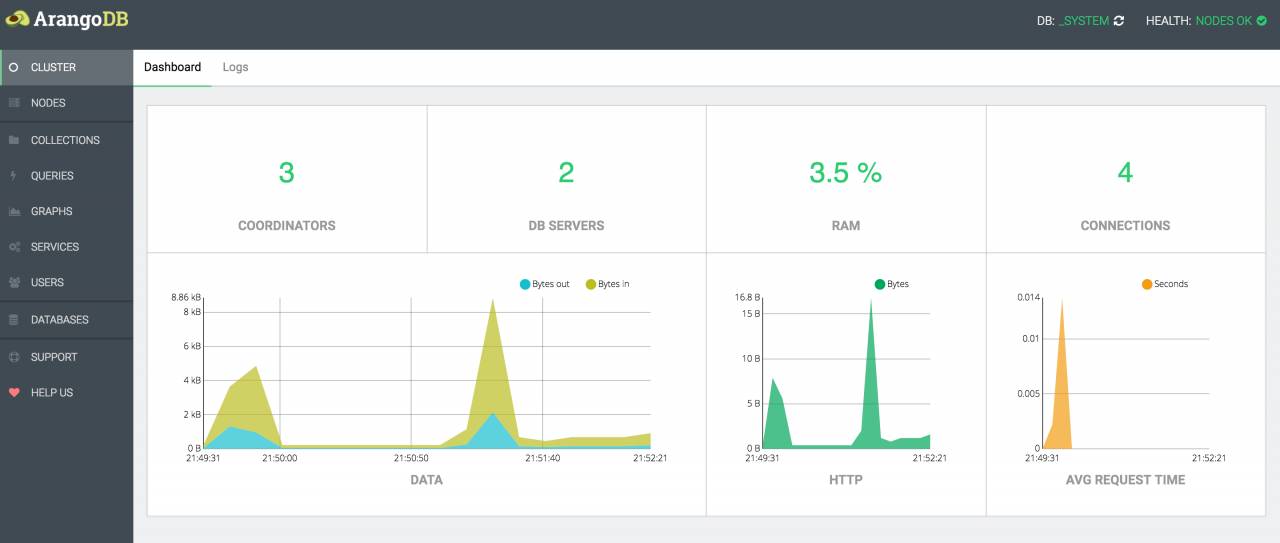


You should still be in the arangosh shell from the previous step. Step 3 - Adding a Database Userįor security reasons, it is only possible to add users from the arangosh command line interface. If you want to dive deeper in this topic, type tutorial into the shell.
ARANGODB DATA IMPORT UPDATE
Next add the apt repository and update the index: Since ArangoDB uses OpenSUSE’s build service, the first thing is to download the public key for its repositories: For this tutorial we will use Ubuntu 14.04 圆4. For more details, please refer to the ArangoDB documentation. The chance is high you don’t need to build it from source. All of the examples in the tutorial can be performed from the user’s home directory:ĪrangoDB comes pre-built for many operating systems and distributions. Now you should log in to your server using the newly created user. The API is resource oriented and can be extended with JavaScript.īefore we start, make sure to have your Droplet set up correctly: HTTP API: ArangoDB provides an HTTP API to allow clients to interact with the database. Much of ArangoDB’s internal functionality is built with JavaScript. Using it in ArangoDB enables using JavaScript inside the database.
ARANGODB DATA IMPORT SOFTWARE
V8: Google’s JavaScript engine that powers Chrome can be easily embedded in other software too. ArangoDB supports ACID-compliant transactions. In a relational database, SQL is an exampel of a query language.ĪCID: The four properties Atomicity, Consistency, Isolation, and Durability describe the guarantees of database transactions. While the former leaves a lot of details to the API user, a query language hands over the details to the database. Query Language: Interact with your data using either an API or a query language. The value can be any data type, even another document. The key is a string that names the value (like a column in a relational database). Documents are arbitrary data structures consisting of key-value pairs. You’ll probably want to familiarize yourself with them before building a project on ArangoDB:ĭocument Store: ArangoDB stores data in documents, in contrast to how relational databases store data. Throughout the article we will use some core concepts.
ARANGODB DATA IMPORT INSTALL
This article will help you to install ArangoDB and will give a short introduction to how some of its core features can be used.Īfter completing this tutorial, you should be able to: Since ArangoDB has a lot of features it could be intimidating at first, but after a second look it is not complicated at all. You can query data with a full-fledged query language (named AQL), make ACID compliant transactions, add custom HTTP endpoints in the form of JavaScript applications with its embedded V8, and more. It was created in 2011, when many NoSQL database were already around, with the goal of being a comprehensive database solution that could cover a variety of use cases.Īt its core ArangoDB is a document store but that is only the beginning.


 0 kommentar(er)
0 kommentar(er)
